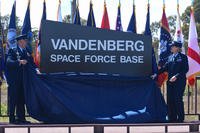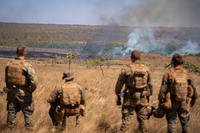MANAMA, Bahrain -- International Mine Countermeasures Exercise 2012 (IMCMEX12) concluded at U.S. Naval Forces Central Command Sept. 27, after two weeks of seminars and training operations.
More than 30 nations, including Japan, United Kingdom, New Zealand, Yemen, France, Italy, Jordan, Australia, Canada, and Norway, participated in the U.S.-led exercise.
"I couldn't be happier with how the international forces came together to make this exercise a valuable experience for all," said Vice Adm. John W. Miller, commander, U.S. Naval Forces Central Command. "We exercise on a regular basis with the nations in and out of the region and we will continue to do that in support of regional security and stability."
The first phase of the exercise kicked off with a three-day IMCMEX 12 Symposium. Senior leaders from participating countries exchanged ideas and industry representatives explained the latest in mine countermeasures technology.
"We've achieved every objective of IMCMEX12. Naval forces from over 30 countries have demonstrated the ability to operate effectively together and clear mines from vital international sea lanes. We've operated ships, helos, divers, and undersea vehicles across over 1,000 miles of this region, confirming our ability to respond to maritime mine threats in the tough undersea environment," said Rear Adm. Kenneth Perry, Commander, Task Force 522 and exercise director. "I'm very pleased with the performance and professionalism of the 3,000 Sailors and mine countermeasure forces from every continent that contributed to the success of IMCMEX12.
In the second phase, ships, crews and observers got underway to conduct training in at-sea maneuvers, mine hunting operations, helicopter mine countermeasures (MCM) operations, and international Explosive Ordnance Disposal operations. Small boat operations focused toward underwater improvised explosive devices.
"Training alongside international partners is crucial to the success of this type of naval activity," says Commodore Simon Ancona, United Kingdom Maritime Component commander. "Exercises like this really go a long way in bringing us together, they enhance cooperation and hone maritime capabilities in support of long-term regional stability and interoperability."
IMCMEX12 took place in the U.S. Central Command area of responsibility, which encompasses about 2.5 million square miles of water and includes the Arabian Gulf, Arabian Sea, Gulf of Oman, Red Sea, and parts of the Indian Ocean. This expanse, comprised of 20 countries, includes three critical choke points at the Strait of Hormuz, the Suez Canal and the Strait of Bab al Mandeb at the southern tip of Yemen.

























